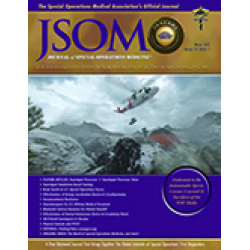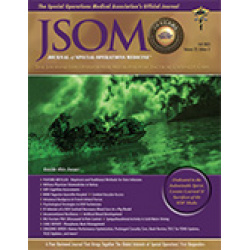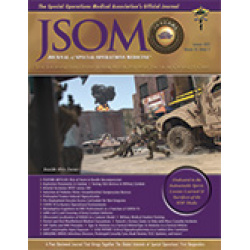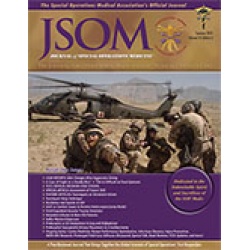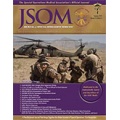Latest Products
The Use of the Abdominal Aortic and Junctional Tourniquet Versus Combat Gauze in a Porcine Hemicorporectomy Model
Schwartz RB, Shiver SA, Reynolds BZ, Lowry J, Holsten SB, Akers TW, Lyon M 19(2). 69 - 72 (Journal Article)
Background: Junctional hemorrhage is a potentially preventable cause of death. The Abdominal Aortic and Junctional Tourniquet (AAJT) compresses major vascular structures and arrests blood flow in exsanguinating hemorrhage. In a human model, the AAJT was effective in stopping blood flow in the femoral arteries via compression of the distal aorta. This study compares the ability of AAJT and Combat Gauze (CG) to stop hemorrhagic bleeding from a hemicorporectomy in a swine model. Method: Six anesthetized swine were used. Carotid arterial catheters were placed for continuous mean arterial pressure (MAP) readings. A hemicorporectomy was accomplished with a blade lever device by cutting the animal through both femoral heads transecting the proximal iliac arteries and veins. Hemorrhage control was attempted with the AAJT and regular Kerlix gauze or CG packing and direct pressure followed by Kerlix gauze placed over the CG. The primary outcome measure was survival at 60 minutes. Results: The 60-minute survival was 100% for the AAJT and 0% for the CG group. During the 60-minute monitoring period, only one CG animal achieved hemostasis. For the AAJT group, the mean time to hemostasis was 30 seconds. Initial MAP was higher in the AAJT group (mean, 87mmHg) than the CG group (mean, 70mmHg). The mean 60-minute MAP was 73mmHg for the AAJT group. Mean blood loss at 5 minutes and mean total blood loss were greater in the CG group than in the AAJT group. Conclusion: AAJT is superior to CG in controlling hemorrhage in a junctional wound in a swine model.


 Español
Español 